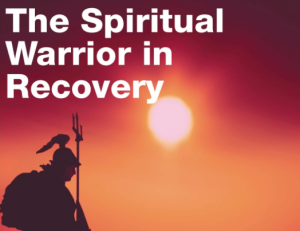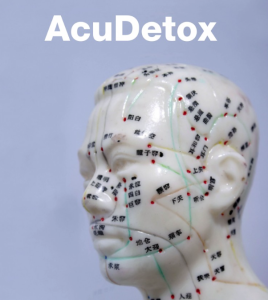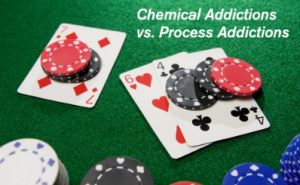By Rosemary Wentworth, MA, CGS, CAGS, CCDP-D, LCDC

Spirituality affects things of Spirit, which can be described as a person’s view on life. The practices and beliefs that one chooses to live by.
The Spiritual Warrior is a person who fights his self-ignorance. He is a person who struggles with improving his attitudes and behaviors. He is willing to discover the truth about reality. He is not fighting anyone else. He is placing distance between himself and his addiction and developing the qualities that will keep him in recovery.
Warrior means one who is brave and can see with his heart. The warrior commits to growing his heart and soul and becoming creative in decision and problem solving.
A Spiritual Warrior in Recovery travels the Path of Serenity, no matter what the chaos is outside of him, inside experiences peace. It becomes easier to have more meaningful relationships. Self- confidence grows with the passing of time. There is an emotional sobriety in which the Spiritual Warrior embraces life rather than isolating or feeling self-pity. He lives in the present moment without dwelling on the past or worrying about the future. He helps others with humbleness and this enjoyable and rewarding way to strengthen sobriety. There is an acceptance of whatever experiences come.
Process Questions
- How would you describe yourself as a Spiritual Warrior in your quest for Recovery?
- What qualities do you have that help you in your journey to recovery?
- What feelings and thoughts do you have when in the Spiritual warrior stance?
- What are the things that prevent you from moving forward?
- What advice would you give to a younger person in recovery who wants to take on this mantle of a Spiritual Warrior?
- What symbol would you create for yourself as a Spiritual Warrior?
What is a Warrior?

A Warrior is… Fearless, Confident, Strong Of Heart, Vigilant, Determined, Courageous, Knows How To Love and Hold Love, Courageous, Intelligent, A Leader, A Teacher, A Mentor, Brave, Skilled, Perseverance, Unflinching, Nimble, Lucid, A Searcher, Honorable, Willing To Help Another Person, Fearless, Knight of the Round Table, Follower of the Light, Grounded in A Spiritual Path, A Man of Character, Accountable, Masterful, A Mentor, A Planner, Eager To Develop Self, Continues to Stay Open to Growth, Nurtures Group Interaction, Uses Intuitive Intelligence, Confident, Generous, Loyal, Integrity, Empathetic, Resilient, Practices Meditation And /Or other Spiritual Disciplines, Validating, Authentic, Knows Self and Character Defects, Discerning, Relentless, Persistent, An Achiever, Fearless, Passionate, Brave, Honest, Humble, Honorable, A Fighter of the Truth, Diligent, Vigilant, Stands Tall, Does Not Surrender, A Man who Knows How To Use His Power Well, Focused, Devoted, Dedicated, A Guardian, A Sponsor, Focused, Practices at Being Skilled and Disciplined, Committed, A Visionary, protects His Sobriety, Willing To Fight For His Sobriety, Open To Learning, Uses Creative Visualization, Curious, Investigates, Gets Into the Solution, Leads By Example, Fair, Open To Feedback, Uses His Tools and Plans When He Needs to Get Onto Action, Grateful, Open to Self- Examination, Sincere, Connected to His Heart…
What is Hope?

Hope is… A Journey, Excelling, More, The Best Yet To Come, Better, Looking Forward To, Value, Pot of Gold, Just Around the Riverbank, Motive/Motivation, Unfinished Canvas, The Bigger Picture, Amends, Dreams, Determination, Ambitions, Willingness, Family, A Future Miracle, Puzzle Pieced Together, Joyous, Belief in a Future, Revelation, Fearless, Willing, Sobriety, Grace, Perseverance, Broken Chains, Optimism, Enlightening, Vision, Salvation, Forgiveness, Enthusiasm, Safety, Second Chance, Empowerment, LIFE !, Surrender, Happiness, Enthusiastic, Safety, Another Chance, Sunshine, Cared For, New Beginning with Higher Power, Concentration, Grateful, Fearless, Educational, Mercy, Foundational, A New Beginning, Faith, Belief in a Higher Power, Confident, Rainbows, Forgiveness, Advancement, Goal Fulfillment, Soul Fulfillment, Understanding, Goodness, Knowledge, Empowering, Dreams and Revelation, A Relieved Survivor, Determination, Angelic, Faithful, Joyful, Fulfilling, Peace, Belief, Freedom, Valuable, Valued, Value, Inspiration, Heart , Warmth, Optimistic, A Way Out, About Not Giving Up, Saying the Serenity Prayer, Still Being Loved, Comforting, About Being a Fighter, About Being a Survivor, Strong, Courageous, Brave, Giving, Positive, Light, Self Love, Vision, Prayer, Spiritual, Happy, About Not Giving Up, A new Day, Support Groups, Light At The End Of The Tunnel, Happiness For Others, Options, Stopping The Cycle for My Child, Opened Pathways, Spiritual Experiences, Independence, Willingness To Believe, Belief That Things Can Change…
What is Serenity?

Serenity is… Peace, Comfort, Love For Self, Happiness, Calmness, Acceptance, Belief, That You Can’t Control, The World,, Fulfillment, Sobriety, Experience, Livelihood, Humble, Understanding, Compassion, Welcoming, Joyous, Tranquility, Music, Nature, Calm, Peaceful, Curious, Botanical, Soft, Pleasurable, Love, A Garden, Cupids, The Wind And The Air, Worry Free, Forgiveness, Self-Acceptance, Belief, Wisdom, Serene, Meditative, Tranquility, Courage, Strength, Friendship, Healthy Boundaries, Meditative Restoration, The Passing Of The Storm, Lavender, Letting Go and letting God, Allowing Love Into My Life, The Wind In The Long Grass And The Fields, Calm, Energized, Accepting, Being here Now, Spiritual, Grace, Mystical, Interconnections, Self- Love, Beautiful, Inspired, NOW, Gently Flowing, Whole, Comfort, Enlightened, Gentle, Connection to Higher Power, Living For Life, Calm, Relaxing, Compassion, Kind, Humble, Stillness, Sobriety, Welcoming, Music, Understanding, Quiet, Natural, Oceanside, Within One Self, Love Gratitude, Acceptance, Loving, Gentle, Pleasant, trees, Water, Sky, At One With God, Surrendering, Pleasant, Sweetness, Honesty, Loving One Self, Heaven, Prayer, Solitude, Safety, Rainbows, God Consciousness, Joy, Hope, Natural Calm, Self Acceptance, Balance, Knowing My Beliefs and Values, Service, Courage, Curious, Courteous, Starlight Wisdom,, Soft, Pleasurable, An Orchid Garden, The Future, Flowers, Aromas, No More Obstacles, Clouds, Gliding, Broken Chains, Forgiving And Forgiven…
What is Spirit?

Spirit is… Unseen, Stamina, Full of Hope, Unbroken, Full of Energy, Truth, Teacher, Comforter, Merciful, Enlightened, Communication, Openness, Willingness, peace, Connection, Freedom, Inner Goodness, Love, Guiding, Honesty, Peace, Humble, Pure, Hungry, Free, Patient, Kind, Steadfast, Grounded, Hopeful, Enduring, Faith, Hope, Higher Power, Belief, Life, Relaxation, Meditation, Moving The Soul, Praise, Gratitude, Wisdom, Heart, Serenity, Compassion, Understanding, Kindness, Clairvoyant, Inspiring, Inner Self, Will Power, Peace of Mind, Power, Search for a Higher Power, Mystical, Giving, Of Value, Infinite, Always Present, Eternal, Stillness, Tolerance, Humble, Pure, Love, Tenderness, Simplicity, Bonding, Empathy, Depth, Lucidity, Epiphany, Simplicity, Humility, Trust, Consciousness, Refreshing, Uplifting, Sacred, Faith, Vulnerability, Healing, Awareness Growing, Playful, Belief, Heaven on Earth, Unseen, Transparent, Kind, Invisible, More Than meets The Eye, Inseparable, Unity, Compassion, Revealing, Deep, Togetherness, Present, Serenity, A Life Condition, Of the Light, Illuminating…

 By Marilyn Vache, MD, Medical Director at The Council on Recovery
By Marilyn Vache, MD, Medical Director at The Council on Recovery




